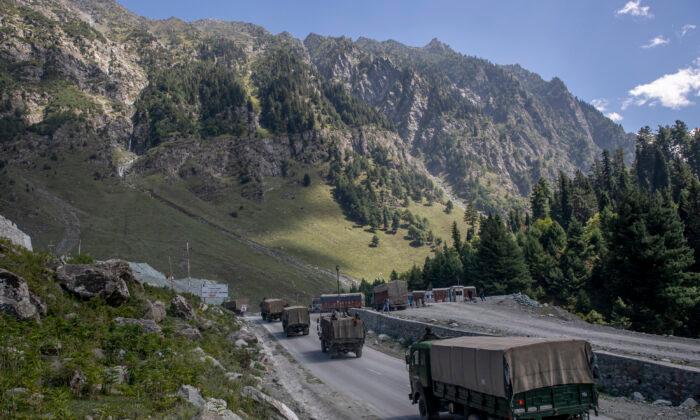The 13th round of talks between India and China broke down again as both countries continue to try to resolve tensions over the western section of the China–India border.
It was hoped the corps commander-level talks held at the Chushul-Moldo border meeting point on Oct. 10 would bring about a long-term solution to the recent clashes.
Instead, the dialogue—which lasted nearly 8 1/2 hours—ended in a stalemate, with the Indian army issuing a statement highlighting that the situation along the shared border had been caused by “unilateral attempts” of the Chinese side to alter the status quo in violation of bilateral agreements.
The discussions between the two sides focused on the resolution of the remaining issues along the Line of Actual Control (LAC) in Eastern Ladakh.
“During the meeting, the Indian side made constructive suggestions for resolving the remaining areas but the Chinese side was not agreeable and also could not provide any forward-looking proposals,” a statement from the Indian army said. “The meeting thus did not result in resolution of the remaining areas.”
“It was therefore necessary that the Chinese side take appropriate steps in the remaining areas so as to restore peace and tranquility along the LAC in the Western sector,” it continued.
“The two sides have agreed to maintain communications and also to maintain stability on the ground. It is our expectation that the Chinese side will take into account the overall perspective of bilateral relations and will work towards early resolution of the remaining issues while fully abiding by bilateral agreements and protocols.”
Meanwhile, China stated that talks had failed, with a statement from Senior Col. Long Shaohua, the spokesperson for the Western Theater Command of the Chinese People’s Liberation Army (PLA), saying, “India insists on unreasonable and unrealistic demands, adding difficulties to the negotiations.”


“China hopes the Indian side will not misjudge the situation, cherish the hard-won situation in the China–India border areas, show sincerity and take actions, and work with China to jointly safeguard peace and stability in the border areas,” Long added.
A major focus of the recent talks was to complete the stalled disengagement Patrolling Point 15 (PP-15) in Hot Springs, as well as issues in Depsang, news agency PTI reported.
The talks took place more than two months after the last round of negotiations in August. Those negotiations resulted in both sides agreeing to the disengagement of troops from Gogra (Patrol Point-17A) where troops had been in a face-off situation since May 2020. The standoffs in Depsang and Hot Springs continued.
India has insisted that the resolution of outstanding issues in all friction points along the LAC is essential to restoring peace and improving ties between China and India.
Despite this, China is deploying record numbers of troops to the India–China border, and frequently changing the commander of the Western Battle Zone that encompasses the border, according to Indian army Chief Gen. Manoj Mukund Naravane.
“Definitely, there has been an increase in their deployment in the forward areas,” he said.
According to Naravane, India has deployed the first K9-Vajra self-propelled howitzer in Ladakh, which is capable of attacking enemy targets at a distance of about 30 miles. “These guns can also work in high-altitude areas, field trials were extremely successful. We have now added an entire regiment, this will be really helpful,” he said, reported FPK.





